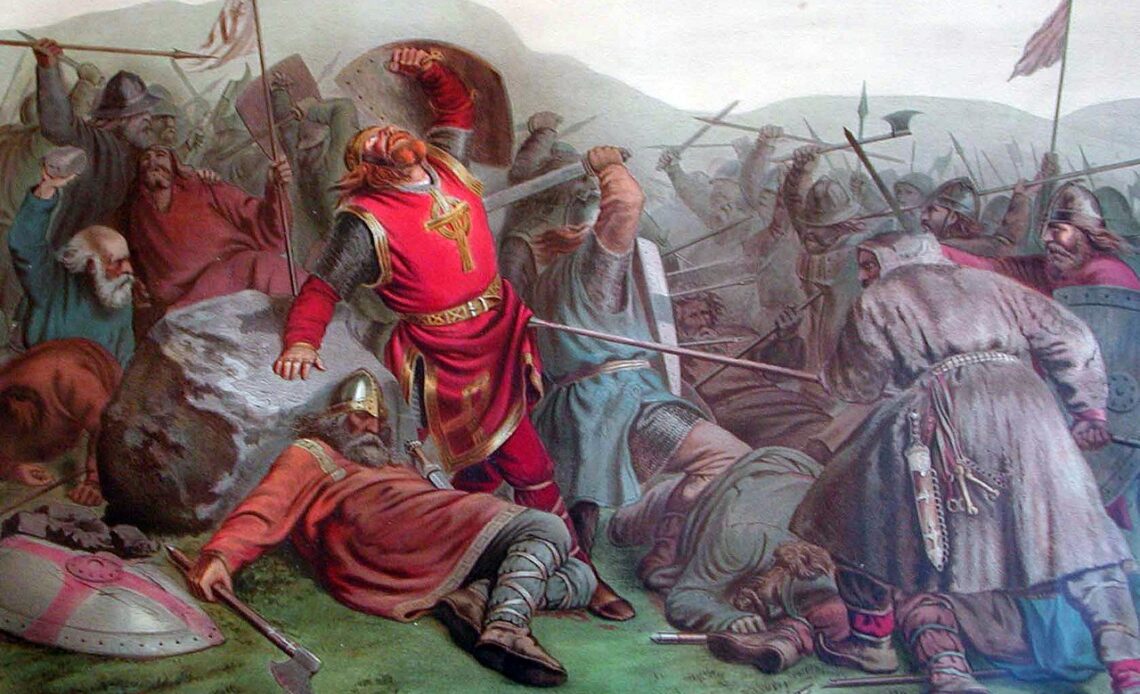
King Olav II of Norway was born in 993 at a royal farm in Ringerike, west of the present capital of Oslo. Even though neither of his parents were a king or queen, Olav was the great-great-grandchild of King Harald I, Norway’s first king.
Being a decedent of King Harald was politically convenient as it gave Olav the right to claim political power and to be considered when the Norwegians wanted to elect a new monarch.
Olav was an ambitious Viking, and he left Norway early to plunder Europe. For an extended period, he ravaged England, France and Spain. During his travels to England, Olav became a Christian. As one of the very first royal Vikings, he was baptised into the Christian faith and rejected the belief in the ancient Norse gods. Eventually, when he returned to Norway, he had the sole aim of Christianising the Norwegian people.

Olav brought with him four bishops and several priests from the Wessex area to Norway. During this period, Olav travelled through Norway and succeeded in converting the majority of the Norwegian people to Christianity; at the same time, hundreds of churches were built throughout Norway. Those who refused to convert to Christianity were killed.
At the same time, Norway was characterised by internal turmoil. Moreover, the Danish king had tried several times to conquer Norway, especially the rich areas of the south. Olav fought several battles in Norway to try to assert himself as king, but when the Danish king attacked Norway with 50 ships in 1028, Olav fled to Russia.

In 1029, Olav returned to Norway to resume his claim as Norwegian King and continue his Christian military campaign. Olav later travelled to Trønderlag, where he met resistance; the local nobles gathered an army and marched against the Christian King. The local army of 7,000 men met with the King’s army of 3,500 soldiers at the small village of Stiklestad where they fought a fateful battle.
The battle was bloody, and a local farmer managed to stab King Olav in the chest with a spear fatally. The Battle of Stiklestad, which took place on 29 July 1030, is one of the most famous battles in Norway’s history. In this battle, King Olav lost his life.
One year after the battle, he was declared as a saint by the Catholic Church, and this battle is considered a milestone for the introduction of Christianity in Norway.

